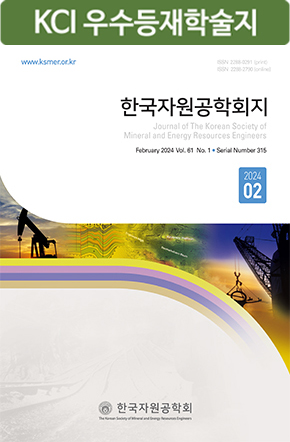Research Paper
- Publisher :The Korean Society of Mineral and Energy Resources Engineers
- Publisher(Ko) :한국자원공학회
- Journal Title :Journal of the Korean Society of Mineral and Energy Resources Engineers
- Journal Title(Ko) :한국자원공학회지
- Volume : 58
- No :2
- Pages :87-99
- Received Date : 2021-02-09
- Revised Date : 2021-03-22
- Accepted Date : 2021-04-27
- DOI :https://doi.org/10.32390/ksmer.2021.58.2.087



 Journal of the Korean Society of Mineral and Energy Resources Engineers
Journal of the Korean Society of Mineral and Energy Resources Engineers








